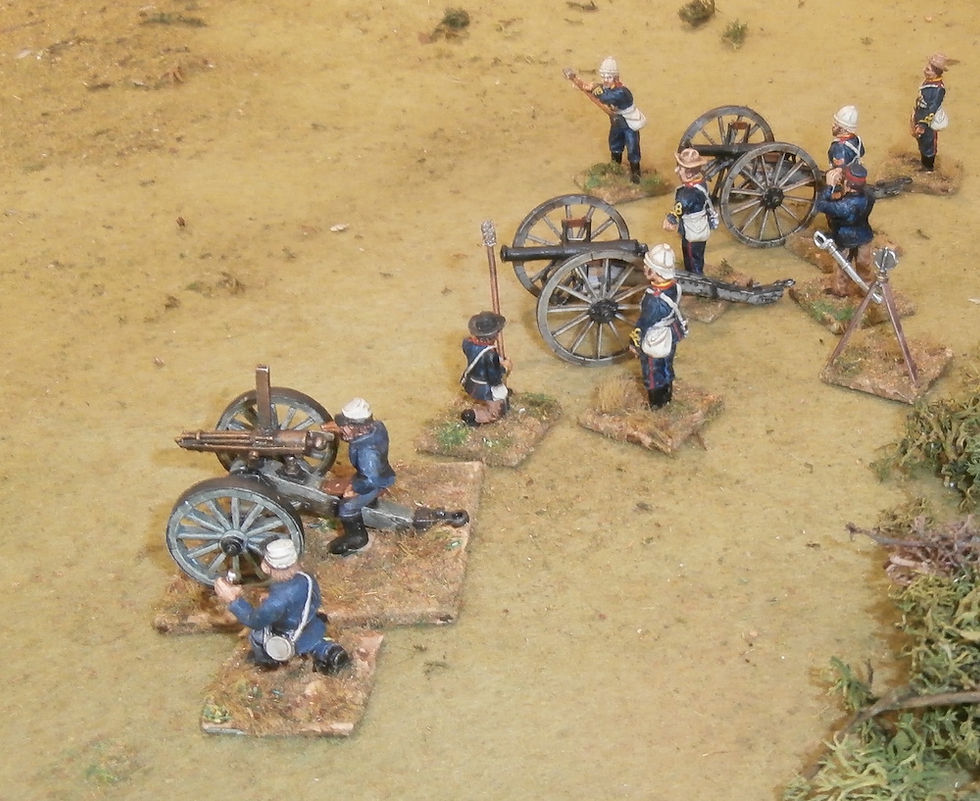The Other Northwest Frontier
- Simon MacDowall
- Apr 11, 2022
- 3 min read
In May 1885 the inhabitants of the Canadian Northwest Territories — Metis (descendants of French and Scottish fur traders intermarried with indigenous women), Cree and Sioux — made a stand at Batoche to defend their traditional way of life. The Canadian authorities treated this as a rebellion and sent an army against them.

The Battle of Batoche (in modern Northwest Saskatchewan) lasted four days. Late last year we played a game set around the opening moves on the first day. Last week we played the last day of the battle, which historically saw the Canadian government troops overwhelm the defenders of Batoche to crush the rebellion. I set up the game to mirror the historical deployment and plans for 12 May 1885 (see game scenario here).

The Canadian artillery with a small covering force deployed on the northern flank to draw the defenders away from the south. Then the Canadian infantry would attack in force on the southern flank.

The Metis player, seeing the Canadians deploying on the northern flank, immediately dispatched Gabriel Dumont’s frontiersmen from Batoche to counter the threat and started moving other Metis from their rifle pits on the southern flank towards the north.

When the Canadian infantry began the main attack on the southern flank, White Cap’s small band of Sioux, bravely advanced through the scrub along the bank of the South Saskatchewan river ravine to harass the advance of the 90th Winnipeg Rifles. The Sioux had some initial success, inflicting casualties and forcing the Rifles to deploy early, thus slowing their advance. This came with a high price and the small band of Sioux were all killed before they could pull back.

The valiant action by the Sioux separated the Rifles from the other Canadian infantry and left the former facing a strong defense by the Cree from rifle pits on the edge of a wood line.

On the northern flank, Dumont’s men dismounted and crawled up a hill to engage a troop of Northwest Mounted Police (NWMP) who had done likewise. The Metis had the best of the close range fire fight, killing both the NWMP officer and sergeant, and forcing the Mounties to retire.

The main action took place around the cemetery and church of Saint Antoine in the centre. Bombardment from the 9-pounder guns of the Royal Canadian Artillery suppressed many of the defenders and set the church on fire.
The Midland Battalion, closely supported by the 10th Royal Grenadiers, attacked the Metis defenders with overwhelming numbers but they lost several men in the attempt. The Midlanders were forced to retire and it looked as if the Canadian attack had failed completely.

It would have been a clear victory for the valiant defenders of Batoche had it not been for one small but very significant incident. Louis Riel, the spiritual leader and the main driving force behind the ‘rebellion’, had moved up to the cemetery to inspire the defenders and bring God’s blessing — crucifix and bible in hand. An artillery shell struck nearby killing Riel instantly. This caused the Metis to melt away and handed victory to the Canadian government forces.
The numbers of men at Batoche were quite small — around 2-300 Metis, Cree and Sioux against some 900 Canadians. Our game, therefore, was fought as a ‘grand skirmish’ with individually based figures (mostly RAFM miniatures) representing about 5 actual men. We used La Petite Guerre rules which can be freely downloaded from my website here.
The full game scenario is also available to download here.
Excellent stuff, Simon, as always. It was a pleasure to be involved in an exciting and mentally stimulating game, thank you. And the lunch in the pub was pretty good, too. 😀
Ernie